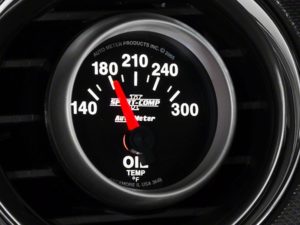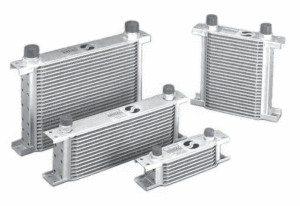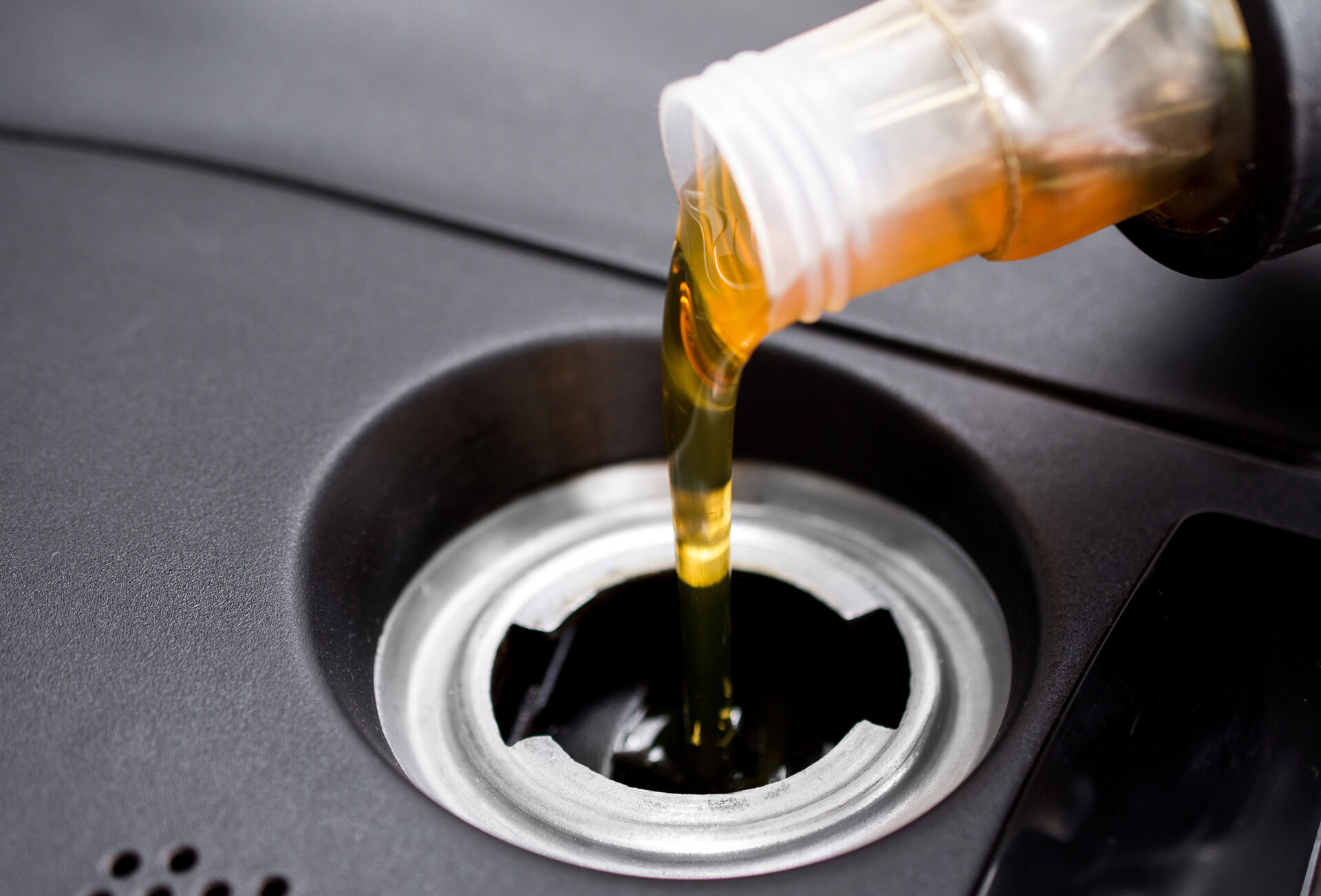If you don’t have an on-board Oil Temperature gauge in your vehicle, you probably have no idea how hot your oil is getting during a session.

Vehicles driven hard at HPDEs or AutoCrosses with stock components or even stock oil coolers often see oil temperatures as high as 250 degrees Fahrenheit! But, don’t rush out just yet and buy a gauge and install it just to prove us wrong…
High Temperatures are Dangerous – If you’re an auto-maintenance-101 expert and have changed your own oil, you know that most motors will carry several quarts of oil for internal lubrication. These days, modern engine oils have a lifespan of somewhere between 7,500 to 10,000 miles before the lubricating molecules and added detergents completely break down. But the reality is: sustained spirited driving wears down those chemicals prematurely.

Reviewing the chart above, you’ll see that different additives in various oils will change their operating and extreme heat ranges. How do you know what oil to choose? – A mineral based synthetic like Shell’s Rotella-T – often used in heavy duty diesels – is rather inexpensive ($60 for 5 gallons at Tractor Supply) and durable, but it’s effective heat range isn’t ideal for our use cases. Whereas a more expensive racing inspired ester synthetic like Motul’s 300v runs much cooler and has a higher tolerances but costs upwards of $50/gallon (Amazon) – WOAH!
Unfortunately, the answer is completely dependent upon how you use your vehicle and environmental factors. Remember that oil temperature gauge we mentioned earlier? … don’t go install one just yet – but if you need to get a quick base line, you can quickly measure the oil temp post session with an analog dipstick thermometer. To find an answer, we urge you to experiment with different brands (not weights, please keep those to spec) but keep in mind that every engine responds differently to oils, additives, weather, etc. But, if you do have an oil temperature gauge installed – it will give you immediate evidence and make your 7th grade science teacher’s lecture on “the scientific method” that much more relevant. More importantly, we always recommend changing oil in a heavily used sports car every 3 months or 3,000 miles – whichever comes first. Changing the oil often keeps the lubricating ability boosted without an oil cooler.

So… Why do I need an oil cooler? – The principle behind how an oil cooler works is rather simple: Engine oil coolers are small radiators placed in front of the coolant system on an automobile that lower the temperature of the oil as it passes through the coils. And an oil cooler system can maintain the quality of your favorite oil for longer periods of time by lowering the working temperature of the oil by as much as 30%. Aren’t they a pain to install? – Oil coolers can be quickly installed in most domestic engines (and transmissions) because they are fitted to accept an oil cooler by design. Most imports and smaller, front-wheel drive vehicles, however, will not be “cooler ready” and will require additional work to make them fit.

No fear though, you’re not about to go full MacGyver here, the “additional work” is generally in the form of figuring out how to fit your “universal oil cooler” – from manufacturers like Mishimoto or Mocal – somewhere in the nose of the vehicle where it can get a steady air stream. Luckily, auto manufacturers (mostly) standardized the pipe fittings used for oil filters and therefore a simple “sandwich plate” (seen below) is used to adapt the oil cooler lines to an existing engine with AN fittings.

Some modern vehicles claim to already come with an oil cooler mounted to the engine, in most cases, especially on smaller front wheel drive vehicle this is done using a water/oil heat-exchanger (as seen below from a MK4 VW) which is fitted to the oil filter housing.

The idea behind the heat-exchanger is two fold: 1). Quickly heat up the oil using a water jacket in the colder months to help speed up the process of getting an engine to operating temperature. 2). Use the water jacket as a heat-sink to take the excess oil heat to the radiator for cooling. In principle this system should maintain “uniform temperatures” while driving. Unfortunately, with extreme driving this type of system can be easily heat-soaked and overrun.

With the sandwich plate and its pipe fitting adapters, you can still add an external cooler to this sort of setup, but often times for our applications it is better to remove these heat-exchanger units completely (above) for optimal coolant and oil efficiency. The sandwich plates are also often designed to accommodate additional sending units (oil temp and/or pressure gauges) or auxiliary oil lines – for that aftermarket turbo you bought for your ’99 Miata. Additionally, if you are confined to a tight engine bay, check to make sure someone hasn’t designed a purpose-built solution for your vehicle (like on our VR6 above). You can also use some space saving sending units (as seen on our 2018 holiday list) as part of your build. – Ok – now you can order that gauge, along with your oil cooler kit (remember to check with: Mishimoto, Mocal, Jegs, Summit Racing, etc for options).

In the end, oil coolers are *always* helpful – Even though there is still a rather heated debate surrounding “oil that is too cool” – and I agree to some extent … if we are only talking about street cars. But in any AutoX, HPDE, Track or Forced Induction (Turbo/Super -charger) vehicle I’m not sure there is ever a condition where “the oil is too cool.” – And, in all seriousness, adding an oil cooler to any motor will extend the life of the oil, thereby extending the life of the engine.
Placement of the oil cooler can be hidden, and it can usually be mounted into even the most cramped engine compartments. The only negative aspect of using an engine oil cooler is the need for more oil, up to two quarts more per oil change, because of the oil required to fill the coils and lines. But at the end of the day, using an oil cooler in your vehicle can only increase the longevity of its engine (or transmission).
And remember, as tempting as those new springs, shocks and big brakes might be… mods that focus on the longevity and endurance of your vehicle will pay dividends if you plan for more spirited driving. We hope to see you out there this season, with your newly installed gauges and oil coolers. #merrymotoring.





















